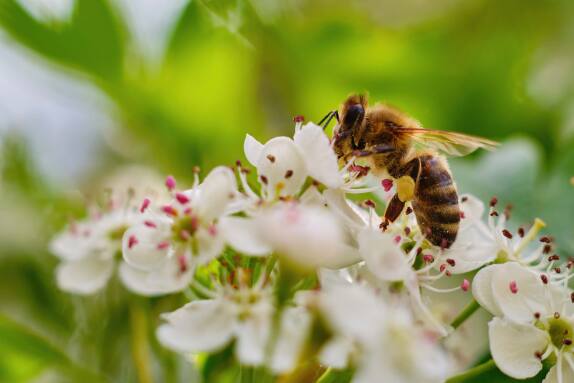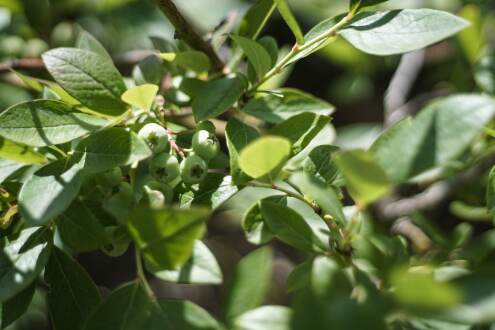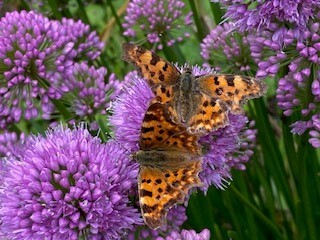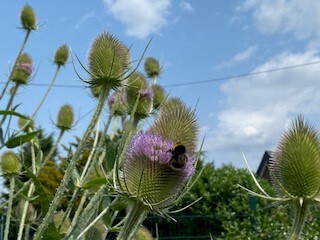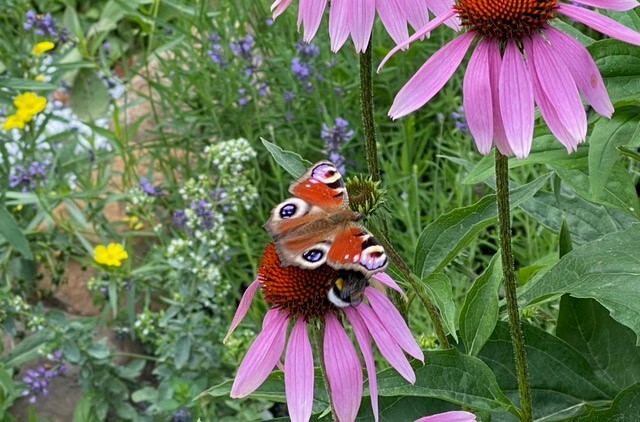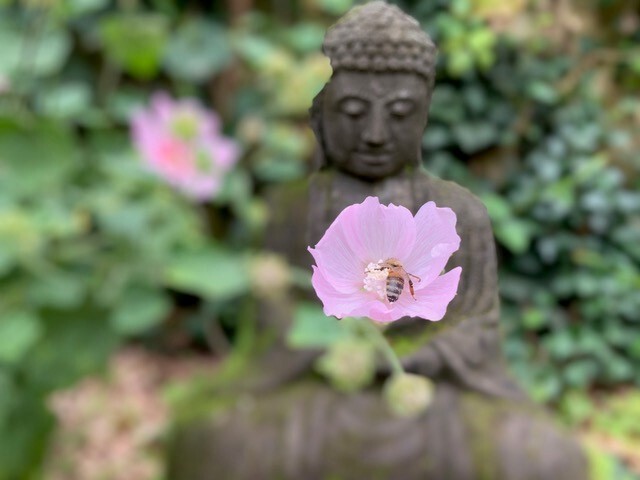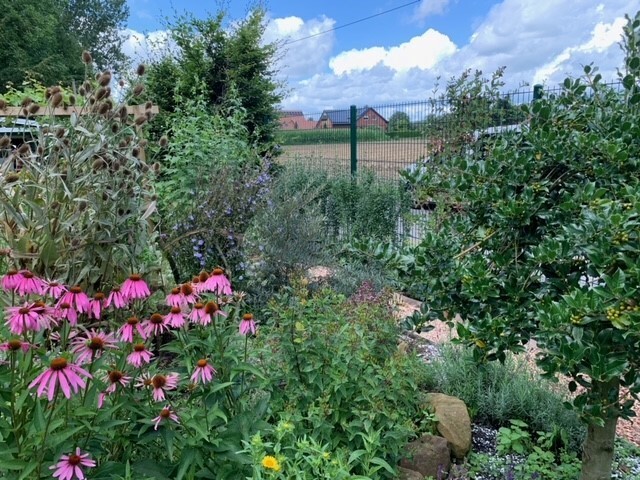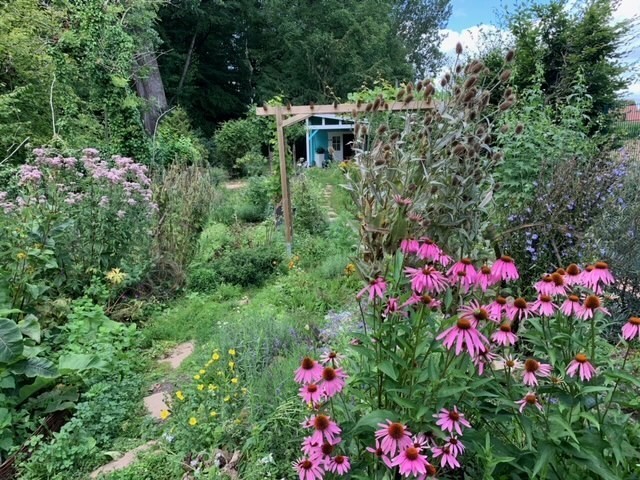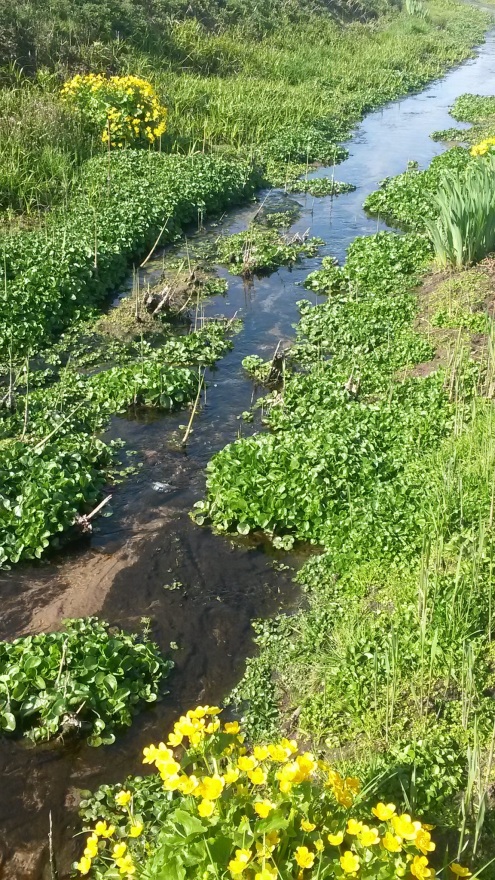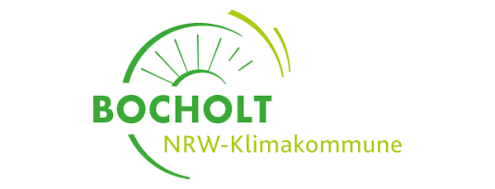Biodiversity Programme
That is biodiversity
Biodiversity is of great importance for the conservation of the environment and for human well-being. It refers to the diversity of all living things and their ecosystems, including plants, animals, fungi and microorganisms.
One of the most important functions of biodiversity is the regulation of climate and water balance. Plants and trees absorb carbon dioxide from the atmosphere and thus contribute to reducing the greenhouse effect. They also provide protection for soils and water sources and help to maintain soil fertility.
Biodiversity also plays an important role in securing the food supply by increasing the productivity of agricultural land and ensuring the stability of ecosystems.
Does it always have to be gravel? No!
The front garden is considered the calling card and figurehead of the house and connects the public area with the private property. The term "garden" is often associated with a wealth of plants and animals, varieties and species, blossoms and fragrances.
Gravel? No thanks.
Gravel gardens, which are unfortunately very popular at the moment, are lifeless, sterile, lacking in tension, cold and ecologically completely worthless. The NUA (Nature and Environmental Protection Academy NRW) has published a flyer on this topic. You will see that even the keyword "time saving" does not speak in favour of a gravel garden!
Extensively used grassland - pure nature conservation
Extensively used, species-rich grassland is a priority habitat of particular importance from a nature conservation perspective.
About 50 per cent of all plant species occurring in Germany can be attributed to these areas. In addition, species-rich grassland is of high landscape cultural and aesthetic value and is a characteristic feature of numerous tourist regions. For this reason alone, these valuable areas should be given very special respect. According to Nabu Bocholt, up to 50 plant species and more can be found on an approx. 25 m² meadow.
Over the last 20 years, the municipal green space division has developed about 170 ha of green space, distributed over about 150 areas. Of these areas, two thirds are currently extensively maintained. This means that these areas are not fertilised and are only mown once or twice a year. Near-natural meadow communities form here in the long term, providing an ecologically valuable habitat for wildlife.
In order to defuse the long-term threat to biodiversity, the city of Bocholt is initiating further projects for the preservation of biodiversity together with various actors in nature conservation.
Creation of field margins
Against the background of the dramatic decline in biodiversity, the state and municipalities have developed a strategy for action. With the aim of improving biodiversity, Bocholt is a member of the round table of the district of Borken for the preservation of biodiversity.
Extensive green space management can contribute to the preservation of biodiversity, as in this way near-natural meadow communities are formed in the long term. In Bocholt, 66 percent of the municipal green spaces are already extensively maintained, for example Bürgerpark Mosse, Technologiepark, Grünzug "Bocholt-West" and parts of the Aasee.
These areas are not fertilised and are mown once or twice a year. In addition, Bocholt has 23 land pools that are available as compensation areas for ecological upgrading in the course of construction measures. Furthermore, the near-natural design of watercourses, as implemented at Holtwicker Bach, Laaker Bach and Alte Aa, has a positive effect on biodiversity. Field margins make an important contribution to the connectivity of existing biotope areas.
Based on an aerial photo analysis, the Department of Civil Engineering, Transport and Urban Greenery (FB 33) compared the urban path parcels with the existing arable land and analysed areas used by others with regard to their suitability as permanent flower strips. As a result, 18 sub-areas with a minimum width of 2 m and at least 500 m² were selected as priority sites for the creation of field margins.
In spring 2017, selected field margins were staked out with the help of oak split poles and, after the necessary soil preparation, sown with appropriate regioseed. By autumn 2017, all 18 sub-areas with a total area of 2.3 ha had been established. They are located in Holtwick, Barlo and Mussum, among other places.
The establishment of field margins throughout the city is intended to connect existing biotope areas in order to enable an exchange of animal and plant species. In the long term, this will create near-natural, structurally rich and permanent meadow communities.
Join in now: Bloom with us!
Every individual can do something by planting wild plants. Turn your garden into a blooming paradise and leave lawnmowers, hedge trimmers and chemical pesticides in the corner. Native plants and creatures will get a natural habitat and the bee will get enough food.
It doesn't always have to be a large garden. Balcony flowers and kitchen herbs can even turn a window sill into a bee-friendly habitat. The topic of "bee-friendly plants" is multifaceted. When choosing plants, three basic rules should be followed. In this way, you can ensure that the flowering plants also provide food for the bees.
- Diversity instead of monoculture: It is important to plant a wide variety of native flowers in order to offer the bees a rich selection. Many wild bee species are specialised in certain plants and only fly to these in search of pollen and nectar. The more diverse the range of plants, the better for the bees.
- Flower supply for the whole year: outside summer, bees often have difficulty finding food. By planting early, mid and late flowering species, you ensure that bees can find food all year round. Beds and window boxes should accommodate flowers, herbs and perennials that bloom from spring to late autumn.
- Smells good, looks good and tastes good: plants with unfilled flowers satisfy our bees' hunger. Filled flower varieties, such as geraniums or cultivated dahlias, are decorative but provide little or no food for bees.
Particularly bee-friendly plants are presented in the BMEL bee encyclopaedia "Bee-friendly plants for balcony and garden". Many more tips for a natural, colourful and species-rich garden are available from the Bocholt Beekeepers' Association and NABU.



